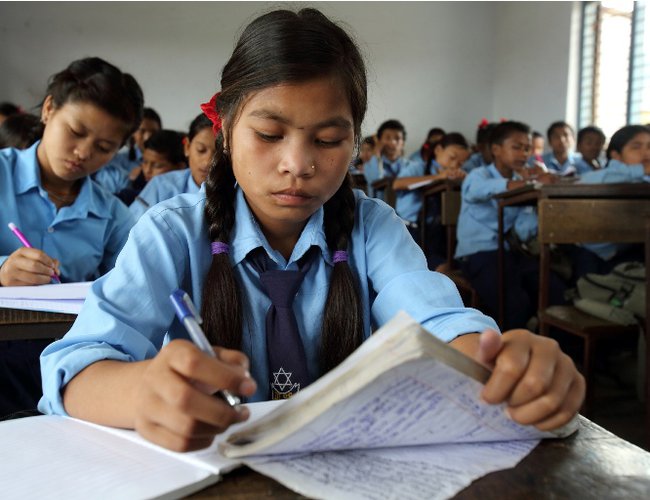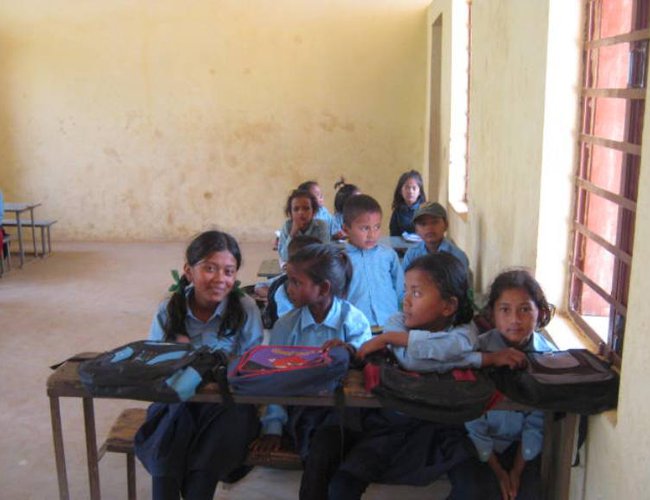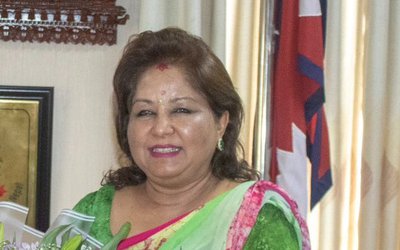
Annually, as the government publishes the secondary education results, the story repeats that a few students are eligible to pursue studies in science because many others have lower grades than required in subjects like math, science and English.
Then an overwhelming number of students either join education, humanities, management or drop out of studies.
According to studies, there is a huge gap in the demand and supply side in engineering and medical sectors. If Nepal has to achieve a high growth rate, it will need to invest a huge amount of money in technical education. However, the situation is bleak. Although the government is providing a huge budget to the country’s universities, they spend a nominal amount of money in technical education.
Except Tribhuwan University and Kathmandu University, no other university has engineering and medical colleges. Universities like Pokhara, Mid-west, Purvanchal and Far West are functioning as universities providing only the affiliations.
This is the reason nobody is interested to invest in the rural and remote parts of Nepal where majority of Nepalese have been living.
“The government has been offering BBA, MBA, Engineering and MBBS courses at affordable fees in different regions,” said Dr. Hari Lamsal, spokesperson of Ministry of Education. “Of course, there is the need to increase the quality of higher education and encourage more students to pursue science, math and English.”
Since the last year the Office of Controller of Examinations (OCE) has started publishing the results of Secondary Education Examinations (SEE) in letter grading system. This year was the first year of SEE, which replaced the old School Leaving Certificate.
SEE Results
“As per the results, 4,284 students have secured Grade Point Average (GPA) 3.65 to 4.00 in regular category,” said Ambika Regmi, the Controller of Examinations. A total of 463,166 students had appeared the Secondary Education Examinations.
Box of Results
SN Number of students GPA Range Grade Description Equivalent Score (Percentage)
1 4,284 Above 3.65 to 4.00 A+ Outstanding 90-100
2 42,427 Above 3.25 to 3.60 A Excellent 80-89
3 50,646 Above 2.85 to 3.02 B+ Very Good 70-79
4 61,955 Above 2.45 to 2.80 B Good 60-69
5 91,314 Above 2.50 to 2.40 C+ Satisfactory 50-59
6 108,464 Above 1.65 to 2.00 C Acceptable 40-49
7 64,577 Above 1.25 to 1.60 D+ Partially acceptable 30-39
8 Above 0.8 to 1.2 D Insufficient 20-29
9 Above 0.0 to 0.8 E Very Insufficient Below 20
Similarly, 42,427 candidates have secured GPA ranging from 3.25 to 3.60; 50,646 in the range of 2.85 to 3.02; 61,955 in the range of 2.45 to 2.80; 91,314 in the range of 2.5 to 2.40 and 108,464 in 1.65 to 2.00.
Likewise, 64,577 candidates have secured GPA ranging from 1.25 to 1.60.
A total of 483,967 candidates had filled forms for regular and exempted categories among which 463,166 appeared in the exam that commenced on March 16 and concluded on March 27 this year. The examinations took place from 8 am to 11 am.
“The SEE result this year has been better in comparison to previous years," claimed Regmi. However, others disagree. Although the number of students, passing the secondary education board examination, has increased, the number of students qualifying to study science has not increased.
Nepal government has been annually spending a huge amount of money in secondary education, at almost seventy percent. However, a large sum of money goes to pay salary and pension for the teachers.
Most of the public schools do not have any facilities including libraries. Students have less hope to pursue science as teaching the subject requires laboratories and teachers as well. In most of the remote parts of Nepal, there is a huge need of science, math and English teachers. This has been affecting the final results.
Compared to government schools, private schools somehow have better facilities. This is the reason private schools have been producing large numbers of students with good marks in science, math and English.
Annual Budget
The government has allocated over 115 billion rupees this year compared to Rs 98.64 billion for the education sector for the fiscal year 2015-16. Though sector-wise, the budget allocated for the education sector is highest, percentage point-wise, at 12 per cent. It is still lowest in the last one decade. Finance Minister Krishna Bahadur Mahara presented the budget of Rs. 1,279 billion for the next fiscal year. The budget since 2013-14, 2014-15, 2015-16, 2016-17, and 2017-18 is Rs. 517.24, 618.1, 819.47, 1048.92 and 1278.99 respectively.
However, officials at the Ministry of Education said the budget allocated for the education sector is not sufficient this year as well given the destruction caused by the April earthquake in schools and other entities.
“The budget is inadequate to reconstruct school buildings damaged by the quake and run other regular programs. We will talk to the Ministry of Finance on this matter,” said Dr. Lamsal. For the fiscal year 2014-15, the government had allocated Rs 86.03 billion, which was 14 per cent of the total budget.
The fiscal budget has allocated Rs 116.3 billion for the education sector. Similarly, this year the budget is over 120 billion rupees. All these figures showed that the budget is on average 14 percent.
“Of course, the budget is very low. But, the management part of the government was very weak and it failed to properly use the allocated budget in the education sector this fiscal year,” said member of parliament Umesh Shrestha. "More than 70 per cent of the education budget is spent on teachers’ salary and management."
“The government has been investing Rs 20,000 on each student of community schools on annual basis, but private schools spend very less and despite that quality of education is outstanding in private schools. In such a condition, quality of education in community schools is not going to change even if the government allocates Rs 120 billion for the education sector.”
The government has been blaming the teachers for the degrading quality of education in community schools. However, teachers say that the government itself has failed to bring new programs to enhance teaching skills of teachers. "Some new programs were added in the budget this time, but what is challenging is the implementation part,” said educationist Bidhya Nath Koirala.
Although Nepal has made a lot of progress in secondary education sector, what it has been is unable to do is to provide quality education for all. This year's SEE results remind Nepali to rethink their pursuit of quality education.

students at secondary school (File Photo)

Students at Primary school
- FOREIGN EXCHANGE: Largest Deposit
- Jul 22, 2024
- IMF: Approval Of SDR
- Jul 22, 2024
- NEPAL-KOREA RELATIONS: Fifty-Years Of Warm Relations
- May 31, 2024
- NEPAL-BRITAIN: Centenary Celebration
- May 31, 2024
- POLITCS: Forming New Alliances
- May 27, 2024
















